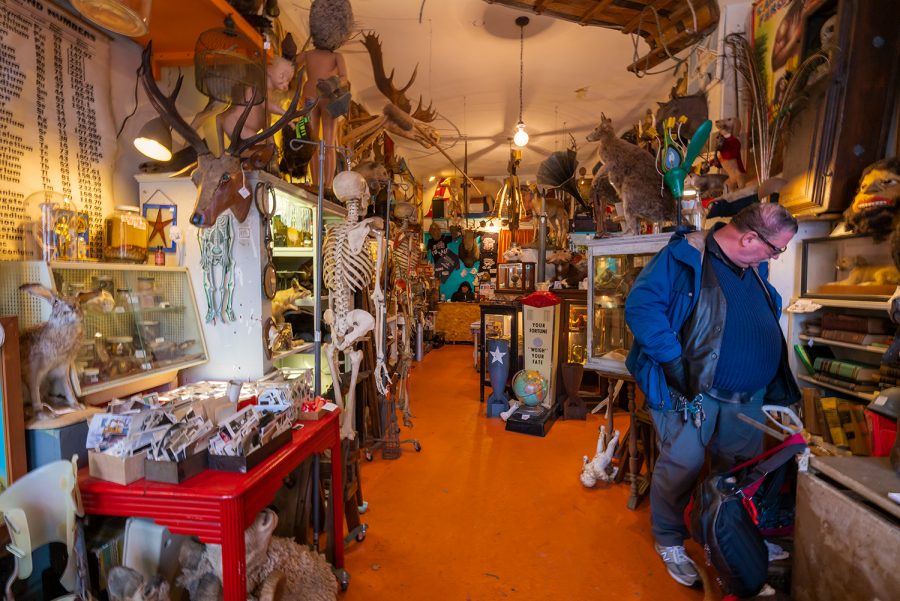Woolly Mammoth antique store: home of the strange
November 19, 2019
Located between a coffee shop and an art gallery in the Andersonville neighborhood sits one of Chicago’s oddest gems: Woolly Mammoth Chicago.
The shop is co-owned by a husband and wife team who also are Columbia grad school alumni, Adam Rust, who earned his MFA in 2005, and Skye Rust, who earned her master’s in 2006 and currently works at the college as assistant director of International Admissions.
“If I had to describe it to somebody … I would just say it’s a hybrid museum-retail place, a very curated sort of fringe antique store,” Adam Rust said.
Nearing its 10-year anniversary this spring, Woolly Mammoth Chicago, 1513 W. Foster Ave., has gone from a fringe antique store to a fully-formed curiosity cabinet, making itself a Chicago institution.
“It wasn’t a plan,” Adam Rust said. “It just organically happened.”
The shop has even carved out its own place within Columbia’s student culture. Stephen Asma, professor in the Humanities, History and Social Sciences Department, has included Woolly Mammoth as a staple teaching tool in his first-year experience course, “Curiosity in the City: Monsters, Marvels and Museums,” for years.
Visiting the shop allows students to get an idea of what exactly a curiosity cabinet is, as they are required to create their own for their final class project.
Curiosity cabinets first emerged in the 16th century as royal and aristocratic families formed personal collections of items considered unique and worldly, according to the Contemporary Issues in Archaeological Theory website.
“Curiosity cabinets are about trying to show us that reality is weirder … than you think it is,” Asma said. “It’s more magical and strange and wondrous.”
Museums such as the Field Museum and the American Museum of Natural History in New York were “literally put together” by combining collections of smaller curiosity cabinets, Asma said.
Today, shops such as Woolly Mammoth preserve much of the wonder that can sometimes be lost in more didactic presentations.
That sort of appeal has both drawn people in and kept some around, creating a community of regulars around Woolly Mammoth.
“We rely on the regulars … but we depend on the tourists because we get tons of tourists as well,” Adam Rust said. “We’re the only kind of game in town that’s like this.”
Overall, at the core of the Woolly Mammoth is an appreciation for the unusual, but a respect for its curation as well.
“There’s a lot of pride, and I hope that shows in our business,” Adam Rust said. “I’m proud of it and I’m happy to show it off.”








